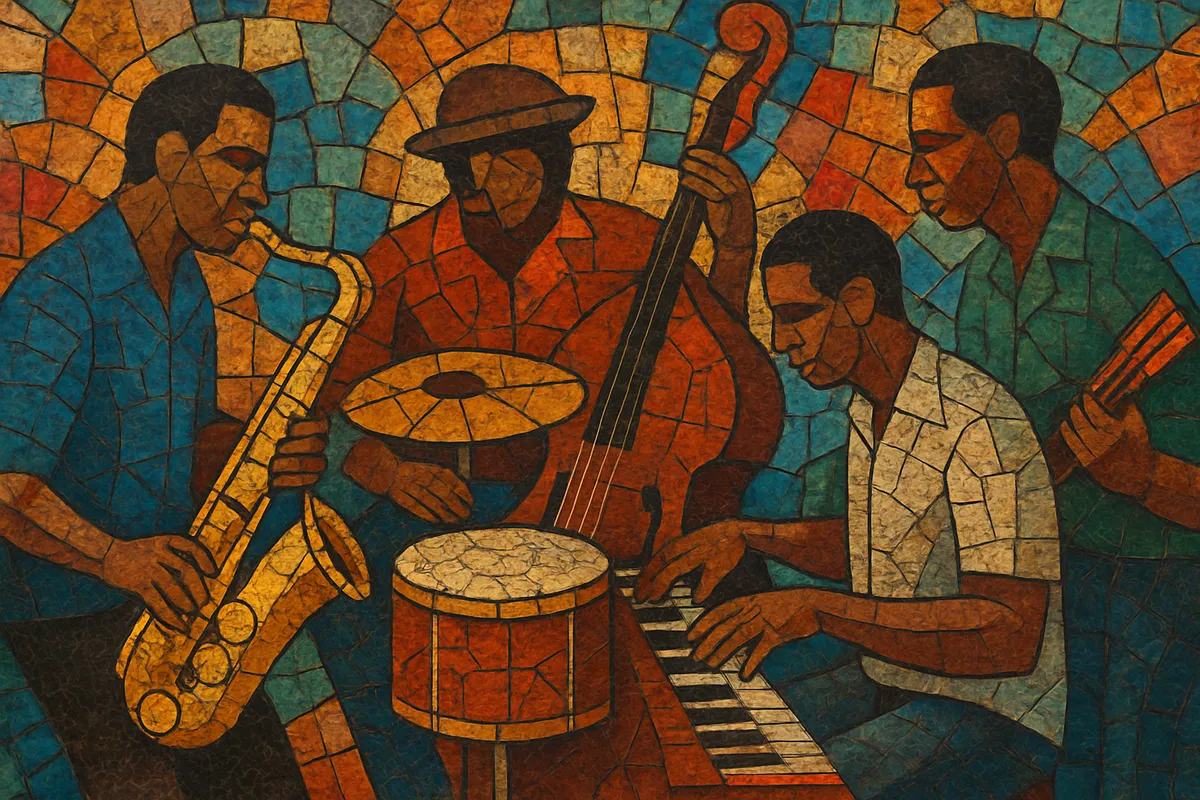Samba‑jazz is a Brazilian small‑combo style that fuses the propulsive, syncopated rhythms of samba with the harmony, form, and improvisational language of modern jazz (especially hard bop and cool jazz). It is typically more energetic and instrumental than bossa nova, emphasizing virtuosic interaction in piano‑trio and quartet/quintet settings.
The drumming concept—pioneered by Edison Machado and others—moves the samba pulse to the ride cymbal and hi‑hat ("samba no prato"), while the bass suggests surdo patterns and the piano/guitar supplies rich jazz voicings. Heads are often concise, followed by swinging, straight‑eighth samba grooves under extended improvisations, and a tight return to the theme.
Samba‑jazz crystallized in Rio de Janeiro’s nightclub circuit—especially the Beco das Garrafas in Copacabana—where Brazilian musicians absorbed American jazz and applied it to samba feel. Drummers like Edison Machado and Milton Banana adapted the samba pulse to the cymbals, while rhythm sections treated the surdo/caixa interplay as bass and snare textures. In parallel with bossa nova, groups such as Tamba Trio and Meirelles e Os Copa 5 defined a punchier, more improvisation‑forward approach.
A run of landmark recordings codified the style: Meirelles e Os Copa 5’s "O Som" (1964), Sambalanço Trio’s albums (from 1964), Zimbo Trio’s early releases, and the Milton Banana Trio’s catalog. Paulo Moura brought a horn‑led modern jazz sensibility on clarinet and saxophone, while pianists Luiz Eça and Tenório Jr. expanded harmonic color and melodic sophistication. The music favored tight heads, brisk samba grooves, and extended solos drawn from bebop and hard bop vocabulary.
As Brazilian artists toured and relocated, the style influenced and blended with broader Latin and jazz scenes. Sérgio Mendes popularized a more pop‑leaning, bossa‑inflected variant abroad, while drummers like Dom Um Romão bridged New York jazz circles. Elements of samba‑jazz fed into Brazilian jazz‑rock/fusion and the MPB ecosystem, paving the way for groups like Azymuth to synthesize samba feel with electric jazz‑funk.
Reissues and crate‑digging renewed interest in the classic 1960s sessions, inspiring contemporary Brazilian and international ensembles to revisit the idiom. Today, samba‑jazz remains a core language in Brazilian jazz education and performance—recognizable by its ride‑cymbal samba pulse, conversational trio interplay, and modern harmonic palette.


